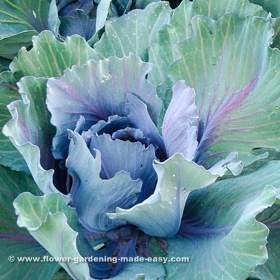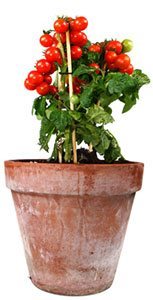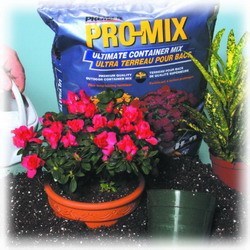
Red cabbage can grow in a half barrel
Why not grow vegetables in containers if you don’t have a piece of ground?
Like other container gardening, all you need is a sunny, sheltered spot for the pots, plus regular watering and fertilizing.
To make your containers as attractive as possible, try combining vegetables with annuals such as marigolds, nasturtiums, as well as fragrant herbs. You might even give edible flowers a try.
What to grow

Photo: istock.com
The amount of sun you have determines what crops you can grow.
Root crops and leaf crops can handle partial shade, but vegetables grown for their fruit – tomatoes and peppers – need at least six hours of full sun each day.
Containers and soil mix
The size of containers you need depends on what you want to grow.
Shallow rooted veggie plants such as lettuce, peppers, radishes and herbs need a container at least 8 to 12 inches (20 to 30 cm) wide and at least 8 inches (20 cm) deep.
But tomatoes, beans, cucumbers and other plants that get large need big containers such as bushel baskets, half-barrels, wooden tubs or large compressed-peat containers.
Always use a soilless mix, a combination of peat moss, vermiculite and perlite. You can enrich it with a little compost.
Vegetables in containers – planting tips

Use potting mix, not garden soil
When planting transplants, such as small tomato plants, fill the container about three-quarters full of potting mix.
Set plants into place following the spacing instructions on the plant tag. Add more soil mix, packing down gently, but firmly.
Leave about an inch of head space at the rim for easier watering. Then water and feed with a water-soluble plant-starter fertilizer high in phosphorous.
If planting seeds such as lettuce or beans, fill the container to within an inch of the rim and pat seeds into planting mix, following seed packet instructions. Keep moist until seeds germinate.
Choosing your veggies
There are lots of good varieties available that don’t grow too big. Try planting cool season crops such as lettuce, spinach and peas in early spring, and then replant the same pots with heat lovers such as tomatoes, basil, peppers and beans.
Don’t overcrowd containers, or you’ll have a smaller harvest. Spacing information for most vegetables and herbs is given on the seed packet or plant tag.
For plants such as tomatoes and pole beans that need cages, stakes or other supports, set them into place when your plants are small so you don’t damage the roots.
Plant care through the summer
Through the growing season, especially the hot days of summer, thoroughly water your vegetables in containers daily, at least until you see water flowing out the drainage holes.
Use a watering can or watering wand that gives a soft spray like a showerhead. If your hose sits in the sun, run it until the water is cool before you give it to the plants. Their roots don’t like getting hot water.
Fertilize container vegetables regularly. You’re better off to give them low doses of fertilizer once or twice a week rather than dousing with large amounts once in a while.
The most common water-soluble formulations are 20-20-20, and you can also find formulations geared to vegetables. If you want to be organic, use organic fertilizer.
For more how-to information, a great book on this topic is: Fresh Food from Small Spaces: The Square-Inch Gardener’s Guide to Year-Round Growing, Fermenting, and Sprouting.
Related Information
How to grow your own asparagus
Container gardening on a roof or balcony
Create a herb container garden
Go from Vegetables in Containers back to Container Gardening




